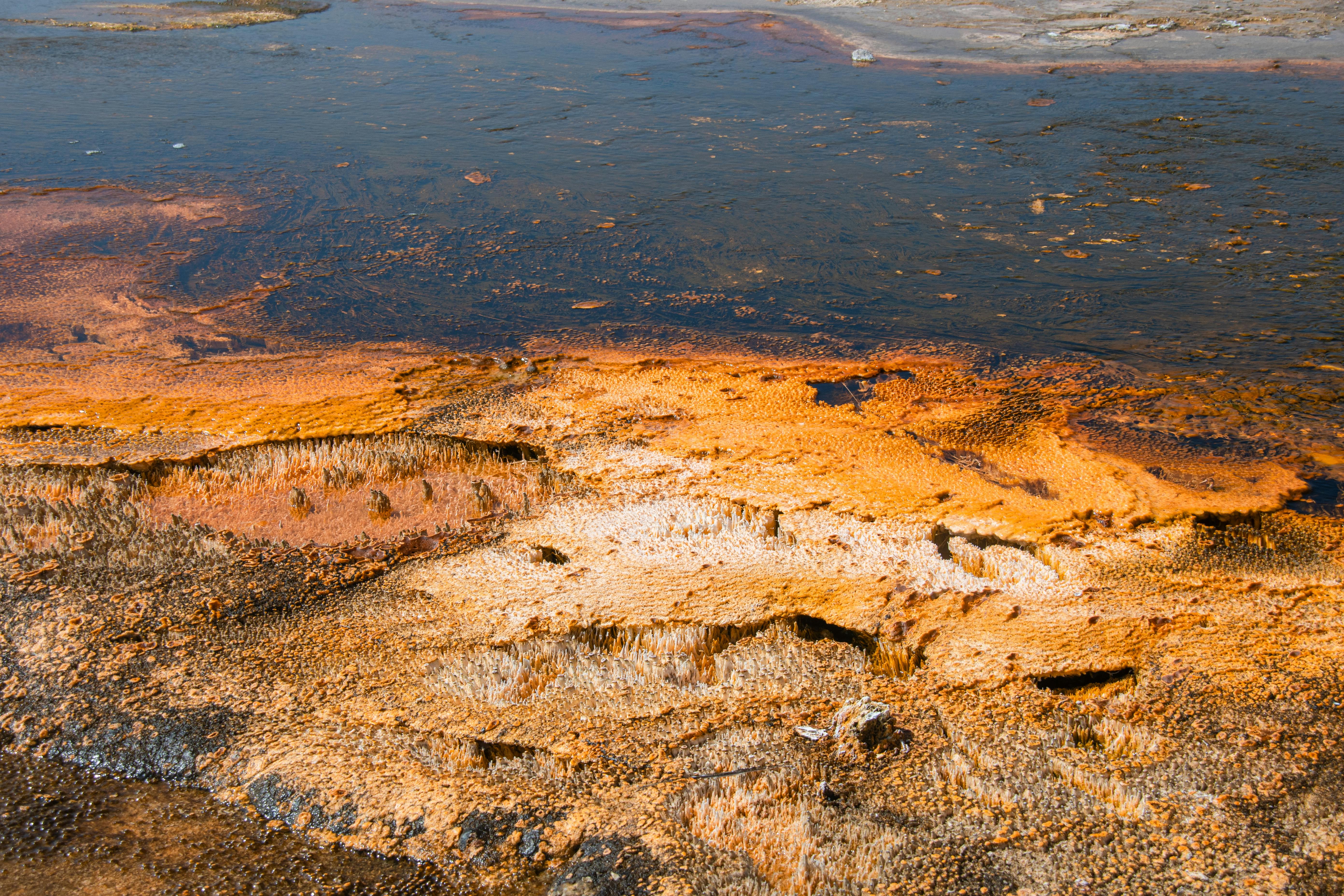Distilled water is a type of purified water that has had both impurities and minerals removed. It is often used in laboratories, in water-cooling systems, and for other specialized applications. The question of whether distilled water is an acid or base can be answered by examining its pH level. Distilled water has a neutral pH, meaning that it is neither an acid nor a base.Distilled water is neither an acid nor a base. It has a neutral pH of 7, which means it is neither acidic nor basic.
Classifying Acids and Bases
Acids and bases are two important types of molecules that can be found in a wide range of products. They are important components in many industries, such as chemistry, food production, and agriculture. Acids and bases can be classified according to their chemical properties.
The most common classification for acids and bases is the Arrhenius acid-base theory, which states that an acid is a substance that increases the concentration of hydrogen ions (H+) when dissolved in water, while a base is a substance that increases the concentration of hydroxide ions (OH–) when dissolved in water. This theory classifies acids as either strong or weak depending on how quickly they ionize in water. Strong acids are those that completely dissociate into their ions when dissolved in water, while weak acids only partially dissociate into ions when dissolved in water.
Another way of classifying acids and bases is according to the Brønsted-Lowry theory, which states that an acid is a proton (H+) donor while a base is a proton acceptor. This means that an acid donates protons to other molecules or ions
Properties of Acids and Bases
Acids and bases are among the most common and important compounds in chemistry. They have distinct properties that make them important in many areas of life, from medicine to industrial manufacturing. Acids react with bases to form salts and release hydrogen ions. Bases react with acids to form salts and release hydroxide ions. Both acids and bases can be found in solutions, or they can be in solid form. Both can be strong or weak depending on the concentration of their respective ions.
The most notable property of acids is their sour taste, which is caused by the release of hydrogen ions when they react with other substances. Acids also have a pH lower than 7, indicating that they are acidic in nature. Bases, on the other hand, taste bitter because of the hydroxide ions they release when reacting with other substances. Bases have a pH higher than 7 indicating that they are basic in nature.
Strong acids and bases also have a corrosive quality to them because they can break down other substances easily due to their high concentration of ions. Weak acids and bases do not have this quality as their ion concentration is much
Physical Characteristics of Distilled Water
Distilled water is a type of purified water that has had both contaminants and minerals removed. It is created through the process of distillation, which involves boiling the water and then condensing the steam into a clean container. The end result is a clear liquid with no taste, smell, or visible particles. Distilled water does not contain any potential contaminants or minerals, making it an ideal option for many uses. It is also often used in laboratories and medical settings due to its purity.
Chemical Characteristics of Distilled Water
Chemically, distilled water is very pure, with no dissolved solids or contaminants. It has a neutral pH level of 7 and does not contain any ions such as calcium or magnesium which are found in tap water. This makes it an ideal choice for scientific experiments where precise measurements are important. Distilled water also has very low electrical conductivity due to its lack of ions, meaning it is not as effective at carrying electric current as other types of water.
Uses of Distilled WaterUnderstanding pH Levels of Acids and Bases
The pH scale is a measure of acidity or alkalinity of a solution. It ranges from 0 to 14, with 7 being neutral. Solutions with a pH less than 7 are considered acidic, while solutions with a pH greater than 7 are considered basic or alkaline. Acids have a pH lower than 7, and bases have a pH higher than 7. The strength of an acid or base is determined by how easily it releases or accepts hydrogen ions. The more hydrogen ions released, the stronger the acid or base.
When it comes to acids and bases, the higher the concentration of hydrogen ions in the solution, the lower its pH will be. Conversely, when the concentration of hydrogen ions is lower in the solution, its pH will be higher. For example, lemon juice has a high concentration of hydrogen ions and therefore has a low (acidic) pH level; on the other hand, baking soda has a low concentration of hydrogen ions and therefore has a high (basic) pH level.
It’s important to note that some acids can actually have a basic nature at certain

pH Scale
The pH scale is a measure of the acidity or basicity of a solution. It is measured on a scale from 0 to 14, with 0 being the most acidic and 14 being the most basic (alkaline). A solution with a pH of 7 is considered neutral, meaning it has equal amounts of hydrogen ions (H+) and hydroxide ions (OH-). Solutions with a pH less than 7 are considered acidic, while solutions with a pH greater than 7 are considered basic or alkaline. Acids are substances that release H+ ions in water, while bases are substances that release OH- ions in water. The pH scale is logarithmic, meaning that each unit on the scale represents an order of magnitude difference in hydrogen ion concentration. For example, a solution with a pH of 3 is 10 times more acidic than one with a pH of 4.
The pH scale is used to measure the acidity or basicity of many different things including soil, water, blood and other body fluids. It can also be used to measure the acidity or alkalinity of foods and beverages. In addition, it can be used to measure
Neutralization Reactions of Acids and Bases
Neutralization reactions occur when acids and bases react with one another to form salt and water. The general equation for this type of reaction is: acid + base → salt + water. This type of reaction is a double displacement reaction, which means that the ions of the acid and base switch places in order to form the products. The products formed in a neutralization reaction are neutral – they have a pH of 7.
Acids are compounds that release hydrogen ions (H+) when they dissolve in water. They have a sour taste and can be corrosive, meaning that they can cause chemical burns on contact with skin. Some common acids are hydrochloric acid (HCl), acetic acid (CH3COOH), sulfuric acid (H2SO4), and nitric acid (HNO3).
Bases are compounds that release hydroxide ions (OH-) when they dissolve in water. They have a bitter taste and can be alkaline, meaning that they can change the color of certain indicators such as litmus paper from red to blue when added to them. Common bases include sodium
Arrhenius Theory of Acids and Bases
The Arrhenius Theory of Acids and Bases, proposed by Swedish scientist Svante Arrhenius in 1884, is one of the most widely accepted theories of acids and bases. This theory states that an acid is any substance which, when dissolved in water, produces hydrogen ions (H+), while a base is any substance which, when dissolved in water, produces hydroxide ions (OH-). This theory has been used for over a century to explain the properties of common acids and bases.
In this theory, an acid is defined as a substance that increases the concentration of hydrogen ions (H+) when added to water. Common examples include hydrochloric acid (HCl), sulfuric acid (H2SO4) and nitric acid (HNO3). On the other hand, a base is defined as a substance that increases the concentration of hydroxide ions (OH-) when added to water. Common examples include sodium hydroxide (NaOH), potassium hydroxide (KOH) and calcium hydroxide (Ca(OH)2).
The Arr

Conclusion
In conclusion, distilled water is neither an acid nor a base. It is considered to be neutral on the pH scale, with a pH of 7.0. Distilled water is essential for some medical treatments and scientific experiments because it does not contain any minerals or chemicals that could alter the pH level of a solution.
However, it is important to note that drinking distilled water may not be beneficial for one’s health as it can cause mineral deficiencies over time due to its lack of minerals. Therefore, consuming distilled water should be done in moderation and with caution.

